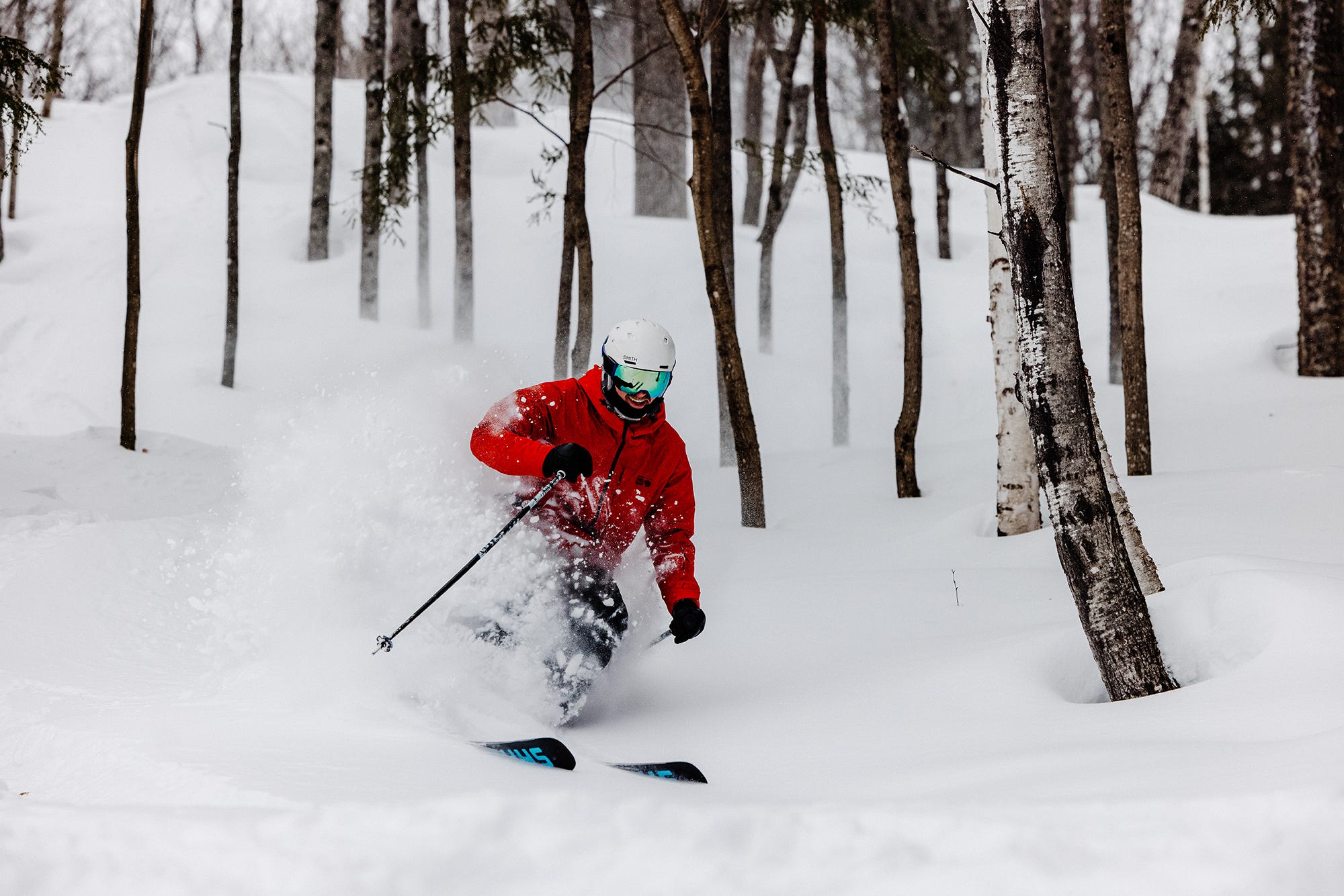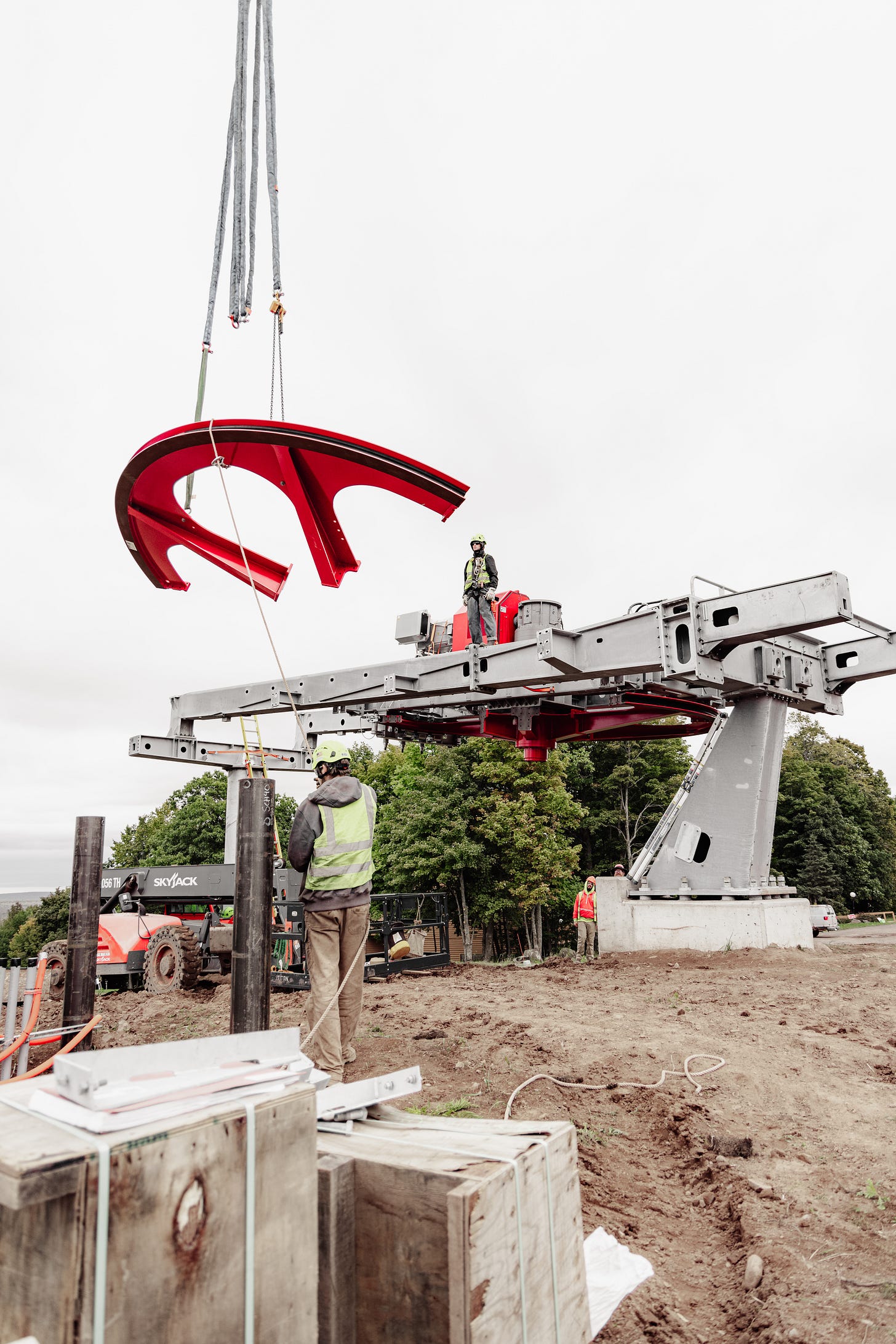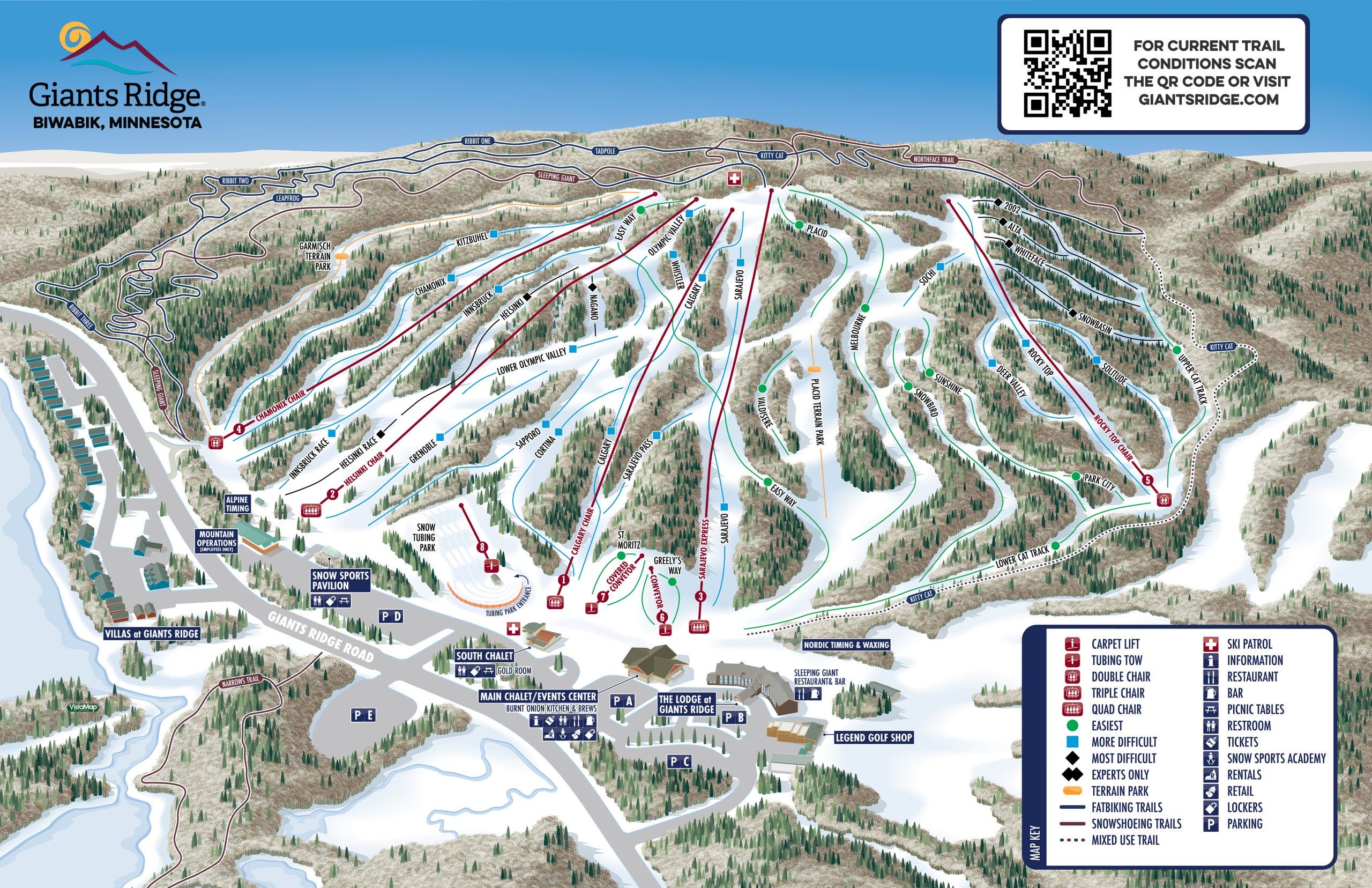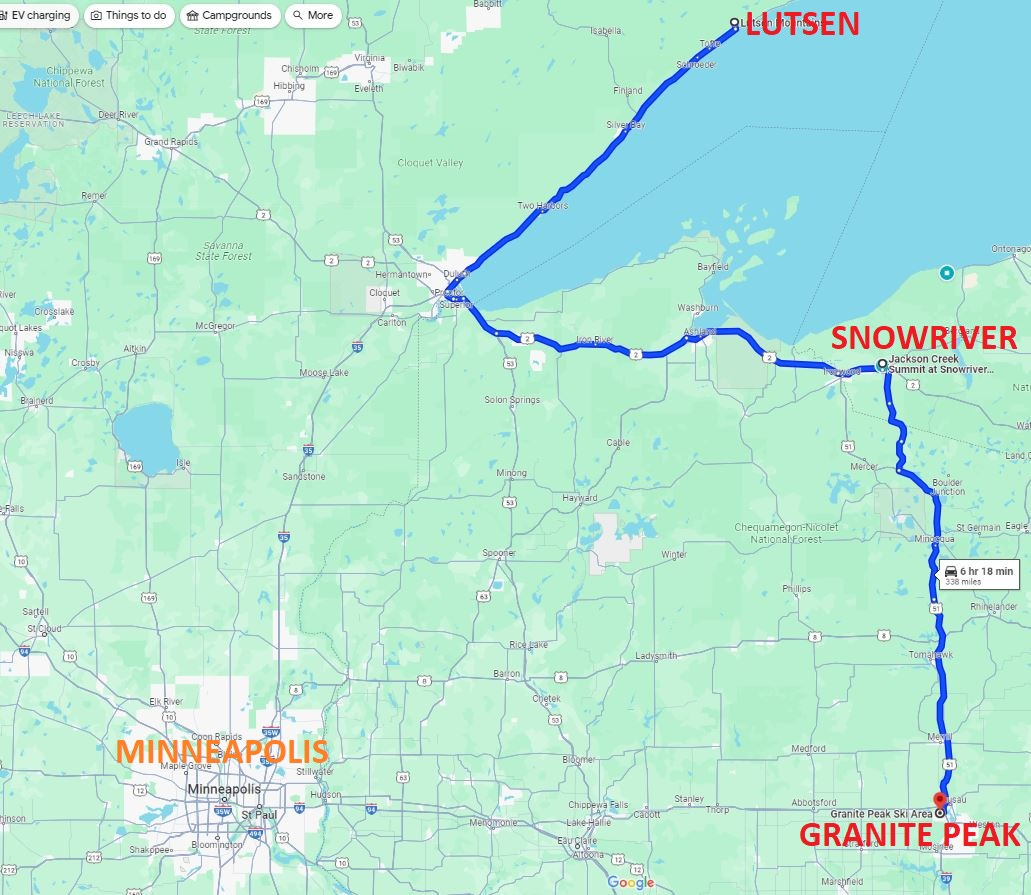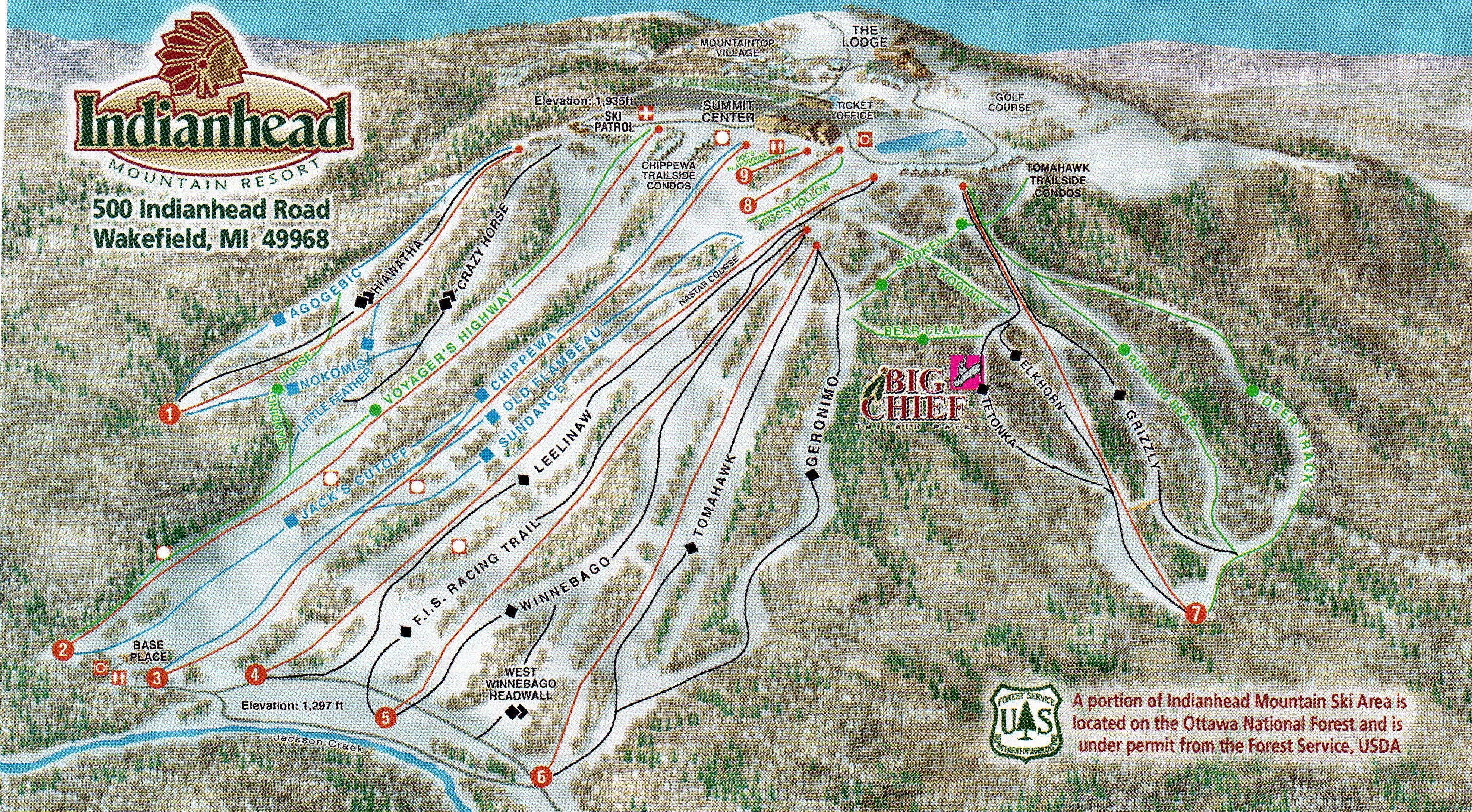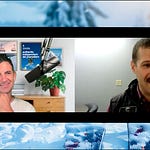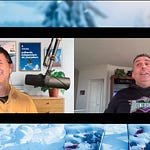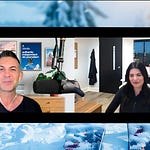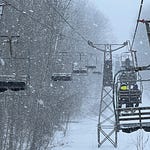Who
Benjamin Bartz, General Manager of Snowriver, Michigan
Recorded on
November 13, 2023
About Snowriver
Click here for a mountain stats overview
Owned by: Midwest Family Ski Resorts
Located in: Wakefield (Jackson Creek Summit) and Bessemer (Black River Basin), Michigan
Year founded: 1959 (Jackson Creek, as Indianhead) and 1977 (Black River Basin, as Blackjack)
Pass affiliations:
Legendary Pass (also includes varying access to Lutsen Mountains, Minnesota and Granite Peak, Wisconsin)
Gold: unlimited access
Silver: unlimited access
Bronze: unlimited midweek access with holiday blackouts
The Indy Base Pass and Indy+ Pass also include two Snowriver days with no blackouts
Closest neighboring ski areas: Big Powderhorn (:14), Mt. Zion Ski Hill (:17), Whitecap Mountains (:39); Porkies Winter Sports Complex (:48)
Base elevation:
Jackson Creek: 1,212 feet
Black River Basin: 1,185 feet
Summit elevation:
Jackson Creek: 1,750 feet
Black River Basin: 1,675 feet
Vertical drop:
Jackson Creek: 538 feet
Black River Basin: 490 feet
Skiable Acres: 400 (both ski areas combined)
Jackson Creek: 230
Black River Basin: 170
Average annual snowfall: 200 inches
Trail count: 71 trails, 17 glades, 3 terrain parks
Jackson Creek: 43 trails, 11 glades, 2 terrain parks
Black River Basin: 28 trails, 6 glades, 1 terrain park
Lift count: 11 (1 six-pack, 6 doubles, 1 T-bar, 2 ropetows, 1 carpet)
Jackson Creek Summit: 6 (1 six-pack, 2 doubles, 1 T-bar, 1 ropetow, 1 carpet)
Black River Basin: 5 (4 doubles, 1 ropetow)
View historic Snowriver trailmaps on skimap.org.
Why I interviewed him
I could tell this story as a Michigan story, as a young skier still awed by the far-off Upper Peninsula, that remote and wild and snowy realm Up North and Over the Bridge. I could tell it as a weather story, of glacial bumps bullseyed in the greatest of the Great Lakes snowbelts. Or as a story of a run-down complex tumbling into hyper-change, or one that activated the lifts in 1978 and just left them spinning. It’s an Indy Pass story, a ski area with better skiing than infrastructure that will give you a where’s-everyone-else kind of ski day. And it’s a Midwest Family Ski Resorts (MFSR) story, skiing’s version of a teardown, where nothing is sacred and everything will change and all you can do is stand back and watch the wrecking ball swing and the scaffolding go up the sides.
Each of these is tempting, and the podcast is inevitably a mash-up. Writing about the Midwest will always be personal to me. The UP is that Great Otherplace, where the snow is bottomless and everything is cheap and everyone is somewhere else. Snowriver is both magnificently retro and badly in need of updating. And it is a good ski area and a solid addition to the Indy Pass.
But, more than anything, the story of Snowriver is the story of MFSR and the Skinner family. There is no better ski area operator. They have equals but no betters. You know how when a certain actor or director gets involved in something, or when a certain athlete moves to a new team, you think, “Man, that’s gonna be good.” They project excellence. Everything they touch absorbs it. Did you know that one man, Shigeru Miyamoto, invented, among others, the Donkey Kong, Mario Brothers, Legend of Zelda, and Star Fox franchises, and has directed or produced every sequel of every game for four decades? Time calls him “the Spielberg of video games.” Well, the Skinners are the Spielberg – or perhaps the Miyamoto – of Midwest skiing. Everything they touch becomes the best version of that thing that it can achieve.
What we talked about
Snowriver’s new six-pack lift; why Snowriver removed three chairlifts but only added one; the sixer’s all-new line; why Midwest Family Ski Resorts (MFSR) upgraded this lift first; the rationale behind a high-speed lift on a 538-vertical-foot hill; knocking 100 vertical feet off Jackson Creek Summit’s advertised vertical drop; “Voyager” versus “Voyageur”; swapping out the old Poma for a handletow; the UP snowbelt; the bad old days of get out of the trees you blasted kids!; Gogebic Community College’s ski area management program; Mt. Zion, Michigan; Giants Ridge, Minnesota; the Big Snow time capsule; why MFSR purchased Snowriver; Mount Bohemia; changing the name from “Big Snow” to “Snowriver”; where an interconnect lift could run and what sort of lift it could be; why Snowriver renamed all the lifts and many trails on the Black River Basin side; potential future lift upgrades on both sides of the resort; potential terrain expansion; new and renamed trails and 17 new glades on the 2023-24 trailmap; the small parcel of Snowriver that sits on U.S. Forest Service land; why Black River Basin is only open Thursday through Sunday; and a joint pass to Snowriver, Granite Peak, and Lutsen.
Why I thought that now was a good time for this interview
The entity now known as Midwest Family Ski Resorts has been running ski areas for decades. I’ve been running The Storm for four years. So by the time I launched in 2019 and then expanded out of the Northeast in 2021, MFSR had already transformed Granite Peak and Lutsen into modern Midwestern giants. Their work on Granite had been particularly impressive, as they’d transformed Wisconsin’s beat-up and decrepit Rib Mountain into a sprawling and modern ski area.
I mean look at this dump:
And here’s the same ski area in 2023:
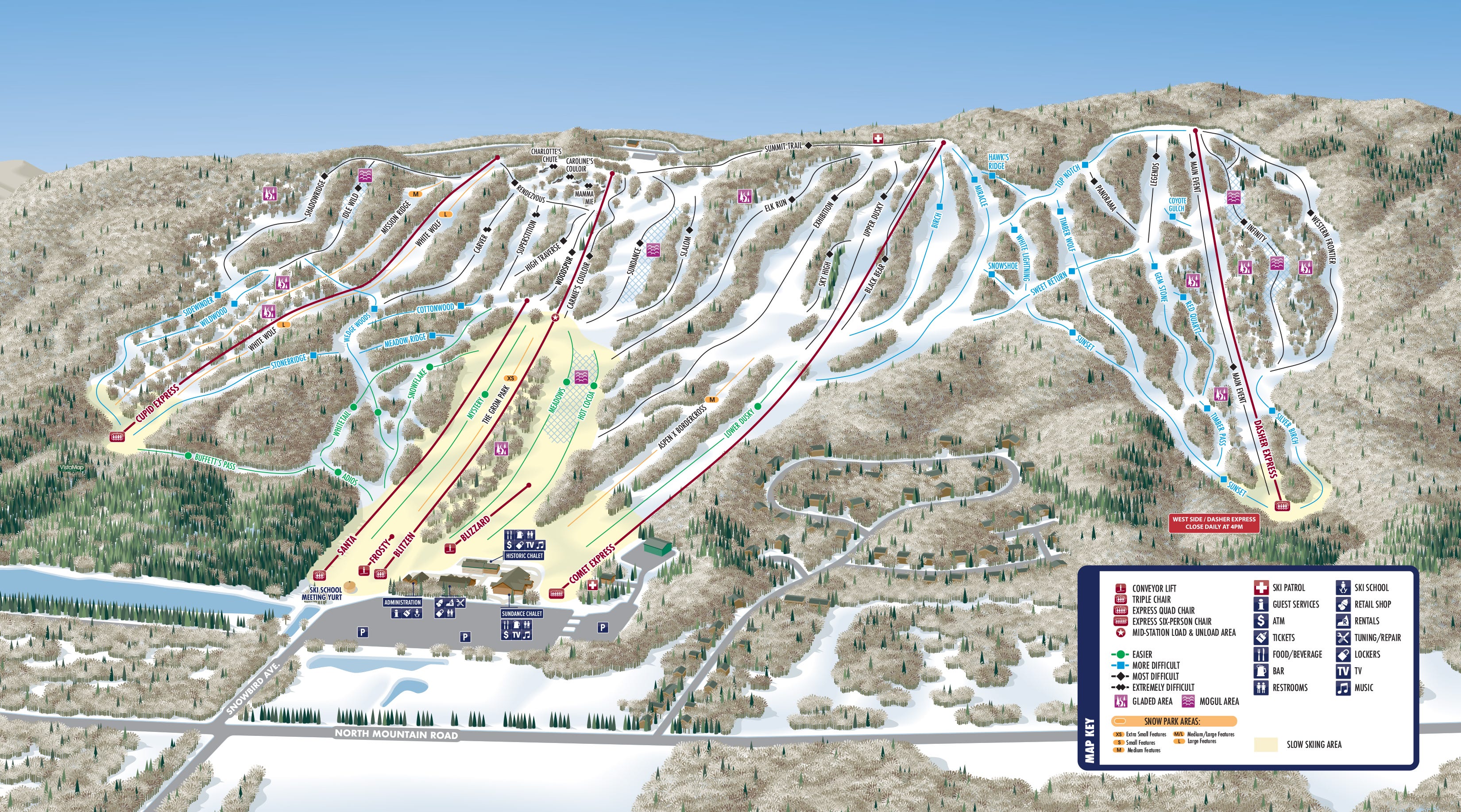
So what a gift when, last year, the company announced the purchase of the side-by-side time capsules then known as Indianhead and Blackjack. A rare chance to see that Skinner magic uncorked on a beat-up backwater, to watch, in real time, that transformation into something humming and hefty and modern.
Most multi-mountain operators buy diamonds, ski areas already streamlined and upgraded and laced with modern machines. MFSR digs deeper, finds coal, then pounds it into its final form. It’s a rough and expensive way to go, but the strategy carries the great advantage of maximum flexibility to sculpt a mountain into your daydream.
The dream at Snowriver is straightforward but impossibly complex: modernize the snowmaking, chairlifts, bedbase, trail network, and grooming; connect the two ski areas with an aerial lift; and establish this snowy but remote complex as a legitimate midwestern destination ski resort. MFSR has, as expected, moved quickly, rebranding the resort; removing five(!) lifts from the Jackson Creek Summit side and building an outrageously expensive six-pack; and making dozens of subtle tweaks to the trail network, adding new runs, renaming lifts and trails, and dropping more than a dozen marked glades onto the trailmap.
This period of rapid change, pronounced as it is, will likely be viewed, historically, as a simple prelude. MFSR is not the sort of operator that lays out grand plans and then glances at them through its binoculars every three years. They plan and tear shit apart and build and build and build. They act how every skier thinks they would act were they to purchase their own ski area. The difference is that MFSR has money, ambition, and a history of transformational action. Watch, amazed, as this thing grows.
Questions I wish I’d asked
Bartz started Ben’s Blog, a cool little update series on Snowriver’s goings-on. I wanted to get into his motivation and mission here, but we were running long.
I also wanted to get into a unique feature of Snowriver a bit more: the huge amount of onsite lodging, which was a big motivating factor in MFSR’s purchase, and a large part of the vision for building a sustainable destination ski resort in a region that has struggled to support one.
What I got wrong
I said that the four Black River Basin Riblet chairlifts dated to the 1970s, and then corrected myself to say that “I believe” one dated to the ‘80s. Ascender, Brigantine, and Draw Stroke date to 1977; Capstan was installed in 1983.
Why you should ski Snowriver
Ever wonder what it’s like to ski in 1978? Pull up to Black River Basin, boot up, and walk over to the lifts. There, you just time traveled. Centerpole Riblet doubles, painted ‘Nam chopper green, squeaking uphill, not a safety bar in sight. There’s snowmaking, but most of the snow you’re skiing on blew in off the big lake 11 miles north. Skiers in their modern fat skis and helmets would blow the illusion, but there are no other skiers to be found.
Then a kid skis by, backpack speaker booming, and you’re like, “OK phew for a second I thought I’d really time-traveled and would be forced to do things like drive around the block without navigation assistance and carry around a camera that was not also a supercomputer and required $15 to purchase and develop 24 photographs.”
If Black River Basin is the past, then Jackson Creek Summit is the future. That sixer landed like an Abrams tank on a Civil War battlefield. I took this video of the old summit double last February:
Now look at the top of the six-pack, which sits on more or less the same spot:
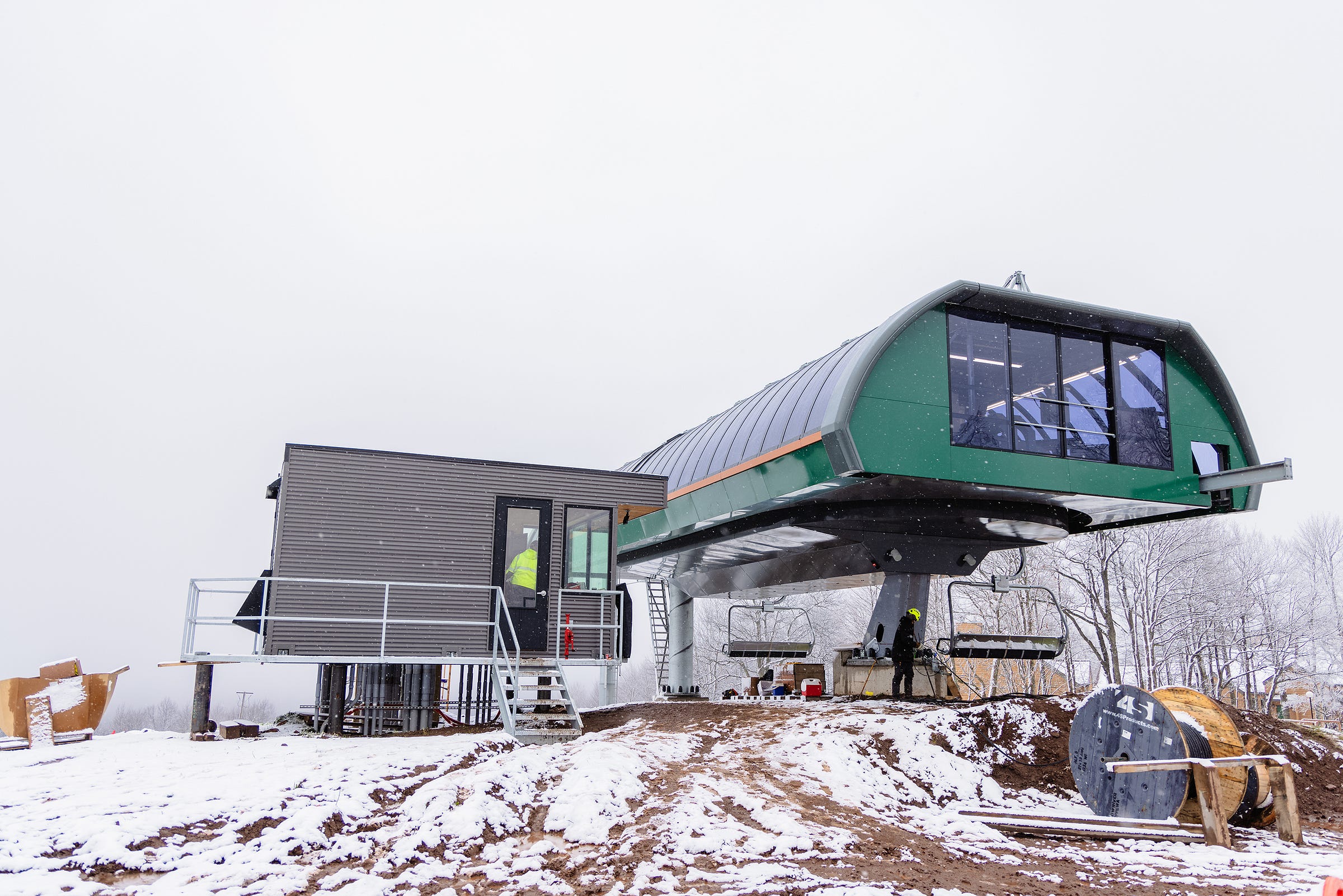
Wild, right? Snowriver is going to keep changing, and it will keep changing fast. Go see it before you miss what it was, so you can truly appreciate what it will become.
Podcast Notes
On the four removed chairlifts on the Jackson Creek Summit side
Snowriver’s new six-pack directly or indirectly replaces four old lifts. The resort also switched up the trail network, with a bunch of new glades and a handful of reconfigured trails. Check out the Jackson Creek Summit side of the resort’s trailmap from pre-sixer and then today (note, also, all the newly marked glades and renamed trails):
On the new trails on the Black River Basin side
MFSR has also renamed most of the lifts and trails on the Black River Basin side, and removed a handle tow (which is now on the Jackson Creek Summit side). Here’s a side-by-side of the ski area’s 2018 and 2023 trailmaps:
On Gogebic Community College and Mt. Zion
So you can actually earn a college degree in ski area management. There are a few schools that do this, one of which is Michigan’s Gogebic Community College. From the program’s overview page:
Overview
The Ski Area Management Program at GCC is one of the nation's most comprehensive training programs for individuals interested in pursuing a career in the snow sport industry. Technical and academic study is combined with a practical internship which is conducted at major resorts throughout Coast to Coast. A valid driver's license is required for completion of this program.
Unique Features
Students spend their freshman year and the first eight weeks of their sophomore year completing prerequisite courses. During this period, the Mt. Zion Recreation Complex is utilized as a training laboratory. Mt. Zion is our college-owned and operated winter sport complex located on campus which is open to the public.
Co-op
The Cooperative Work Experience assignment (Co-op) is the capstone of the Ski Area Management Program. All sophomore Students participate in the five month internship where they gain important operational experience in an actual resort environment.
The huge advantage that Mt. Zion has over similar programs is that it owns an on-site ski area, Mt. Zion. While this is just a 300-vertical-foot bump served by a double chair, it’s laced with some twisty fun little runs fed by 200 inches of annual lake effect:

On Giants Ridge
Bartz really launched his career as Mountain Operations Manager at Giants Ridge, a 500-footer in the Northern Minnesota hinterlands. Here’s the most recent trailmap:
On the UP snowbelt
For such a remote area, the UP is home to one of the densest concentrations of ski areas in America. Five ski areas sit within a 21-mile stretch along the Wisconsin-Michigan border: Whitecap (in Wisconsin), and Mt. Zion, Big Powderhorn, and the two Snowriver ski areas, all in Michigan. Here’s how they line up:
On the proximity of MFSR’s portfolio
MFSR’s three ski areas are, as a unit, really well positioned to serve the major Midwestern cities of Minneapolis-St. Paul, Milwaukee, and Chicago. Here’s where they sit in relation to one another:
And here’s the distance table between them:
On Rick Schmitz
Rick Schmitz – who owns Little Switzerland, Nordic Mountain, and The Rock Snowpark in Wisconsin – once owned Blackjack, now Black River Basin. He relays that experience, and why he ultimately sold his interest in the ski area, starting at the 39:40 mark of this podcast we recorded together last year:
On Mount Bohemia
Boho is, as I’ve written many times, one of the most amazing and unique ski areas in America. It has no grooming, no snowmaking, and no beginner terrain. It’s lodged at the ass-end of nowhere, on a peninsula hanging off a peninsula in the fiery middle of Lake Superior. While regional lore credits (or blames) the renaissance of MFSR’s Granite Peak with looting Snowriver’s skiers, the rise of Bohemia, which opened in 2000, surely drew more advanced skiers farther north. Here’s a trailmap:
And here’s a conversation I recorded with Boho owner, founder, and president Lonie Glieberman last year:
On two ski areas becoming one
For decades, the two Snowriver ski areas now known as Jackson Creek Summit and Black River Basin were separate, competing entities known, respectively, as Indianhead and Blackjack. Observe the varied style of trailmaps of recent vintage:
At some point, the same entity took possession of both hills and introduced the “Big Snow Resort” umbrella name. Each ski area retained its legacy name, as you can see in this joint trailmap circa 2018:
Then, last year, MFSR changed the umbrella name from “Big Snow” to “Snowriver,” and changed the name of each ski area (though they framed this as “base area renamings”) from Indianhead and Blackjack to Jackson Creek Summit and Black River Basin, respectively. I broke down the name change when MFSR announced it last September.
On the Snowriver interconnect
Bartz provided outlines of four potential interconnect lines. In all cases, Jackson Creek Summit sits on the left, and Black River Basin is on the right:




On US 2
The Snowriver ski areas both sit off of US 2, a startling fact, perhaps, for skiers who use the same road to access ski areas as far-flung as Stevens Pass, Washington and Sunday River, Maine. US 2 is, in fact, a 2,571-mile-long road that runs in two segments: from Everett, Washington to St. Ignace, Michigan; then breaking for Canada before picking up in northern New York and running across Vermont and New Hampshire into Maine. It is the northernmost cross-country east-west highway in America. Ski areas that sit along or near the route include Stevens Pass and Mt. Spokane, Washington; Schweitzer, Idaho; Blacktail and Whitefish, Montana; Spirit Mountain, Minnesota; Big Powderhorn, Mt. Zion, Snowriver, Ski Brule, and Pine Mountain, Michigan; Bolton Valley, Vermont; and Sunday River, Titcomb, and Hermon Mountain, Maine; among others.
On the Legendary Pass
For the 2023-24 ski season, MFSR dispensed with offering single-mountain season passes, and combined all three of its properties onto the Legendary Pass. The gold tier, which is now sold out, debuted at $675 last spring. The Silver tier ran $475 early bird, which is not a material increase from the $419 Snowriver-only 2021-22 season pass (which did not include any Granite or Lutsen access):
The Storm publishes year-round, and guarantees 100 articles per year. This is article 106/100 in 2023, and number 491 since launching on Oct. 13, 2019.




